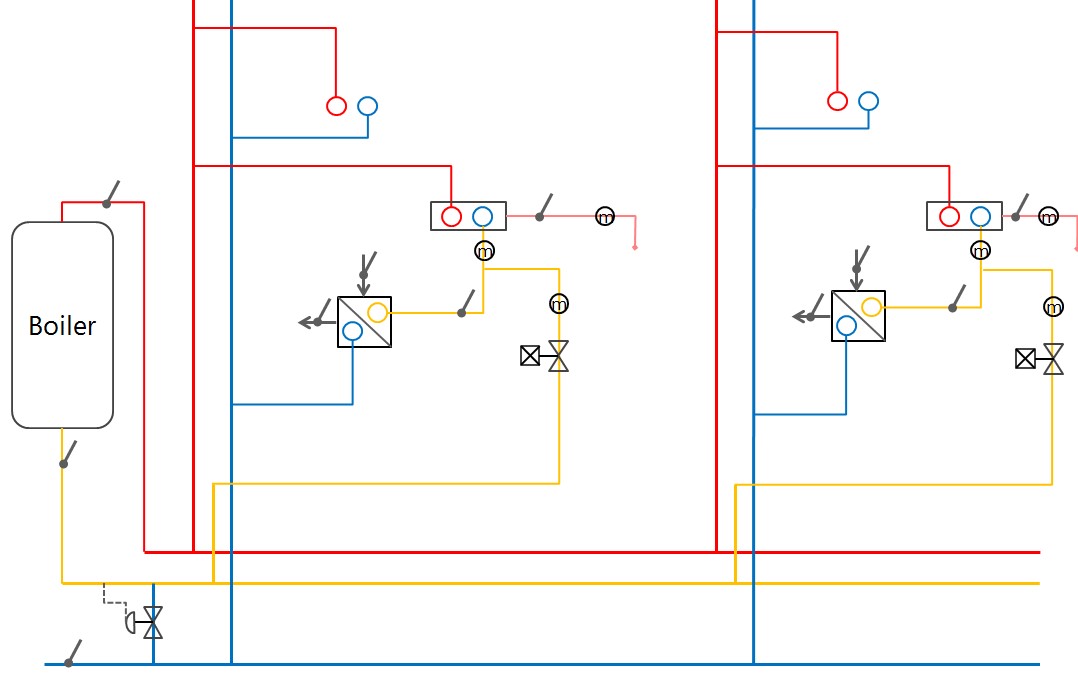Waste water heat recovery in buildings
With significant reductions in heating demand of newly built buildings over the last decades energy demand for domestic waste water generation has become increasingly important comprising up to 60% of total energy demand in passive houses. Therefore, WWHR in buildings has recently gained more attention. While passive heat recovery using direct heat exchange has the potential to significantly reduce energy demand for DHW (DHW) generation, active heat recovery using a heat pump is showing a great potential for efficiency increase in heat pump operation. To further promote the installation of WWHR new ways of heat integration, i.e. combinations of heat usage from waste water in the building with low investment cost and little complexity need to be sought and studied in future.
A significant potential of WWHR has been identified on a house-hold level which shall be explored in the course of Empa’s contribution to the Swiss Competence Center of Energy Research "Efficiency in Industrial Processes" - SCCER EIP. The overarching research questions are thus
-
What WWHR approaches show largest potential for energy performance improvement and which ones are most competitive, i.e. have the largest potential for actual implementation in buildings?
-
How big are the energy performance improvement achieved on a building level by the respective approaches?
The research and innovation platform NEST available at Empa is used to assess the performance and performance degradation over time of a drain water heat recovery device available from a Swiss startup company called Joulia. Besides performance related questions, the planned installation in NEST (Figure 1) will allow for studying different connection schemes (balanced/unbalanced flow) as well as the over-all hydraulic integration on a building level. Related questions concern temperature and pressure variations during operation caused by an increased pressure drop across the heat exchangers and by the discontinuous feed-in of fresh-water for pressure stabilization. This installation is a good base for technology assessment and offers potential for industry collaboration as well as the establishment of recommendations and guidelines for future installations.

-
Share
